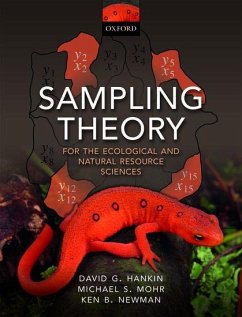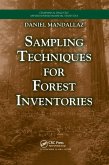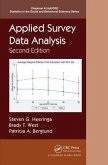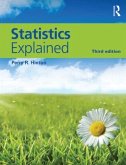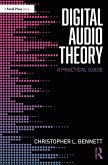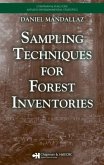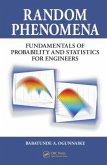David G. Hankin (Professor Emeritus, Professor Emeritus, Humboldt S, Michael S. Mohr (Fisheries Investiga Fisheries Investigation Chief, Kenneth B. Newman (Reader, Reader, School of Mathematics, Universit
Sampling Theory
For the Ecological and Natural Resource Sciences
David G. Hankin (Professor Emeritus, Professor Emeritus, Humboldt S, Michael S. Mohr (Fisheries Investiga Fisheries Investigation Chief, Kenneth B. Newman (Reader, Reader, School of Mathematics, Universit
Sampling Theory
For the Ecological and Natural Resource Sciences
- Broschiertes Buch
- Merkliste
- Auf die Merkliste
- Bewerten Bewerten
- Teilen
- Produkt teilen
- Produkterinnerung
- Produkterinnerung
This introductory text is specifically targeted at ecologists and resource scientists, illustrating how sampling theory can be applied in a wide variety of resource contexts. The emphasis throughout is on design-based sampling from finite populations but attention is also given to model-based prediction and sampling from infinite populations.
Andere Kunden interessierten sich auch für
![R Companion for Sampling R Companion for Sampling]() Yan LuR Companion for Sampling31,99 €
Yan LuR Companion for Sampling31,99 €![Sampling Techniques for Forest Inventories Sampling Techniques for Forest Inventories]() Daniel MandallazSampling Techniques for Forest Inventories89,99 €
Daniel MandallazSampling Techniques for Forest Inventories89,99 €![Applied Survey Data Analysis Applied Survey Data Analysis]() Steven G. HeeringaApplied Survey Data Analysis91,99 €
Steven G. HeeringaApplied Survey Data Analysis91,99 €![Statistics Explained Statistics Explained]() Perry R. Hinton (UK Warwick University)Statistics Explained71,99 €
Perry R. Hinton (UK Warwick University)Statistics Explained71,99 €![Digital Audio Theory Digital Audio Theory]() Christopher L. BennettDigital Audio Theory55,99 €
Christopher L. BennettDigital Audio Theory55,99 €![Sampling Techniques for Forest Inventories Sampling Techniques for Forest Inventories]() Daniel MandallazSampling Techniques for Forest Inventories116,99 €
Daniel MandallazSampling Techniques for Forest Inventories116,99 €![Random Phenomena Random Phenomena]() Babatunde A. Ogunnaike (University of Delaware, Newark, USA)Random Phenomena209,99 €
Babatunde A. Ogunnaike (University of Delaware, Newark, USA)Random Phenomena209,99 €-
-
-
This introductory text is specifically targeted at ecologists and resource scientists, illustrating how sampling theory can be applied in a wide variety of resource contexts. The emphasis throughout is on design-based sampling from finite populations but attention is also given to model-based prediction and sampling from infinite populations.
Hinweis: Dieser Artikel kann nur an eine deutsche Lieferadresse ausgeliefert werden.
Hinweis: Dieser Artikel kann nur an eine deutsche Lieferadresse ausgeliefert werden.
Produktdetails
- Produktdetails
- Verlag: Oxford University Press
- Seitenzahl: 360
- Erscheinungstermin: 26. November 2019
- Englisch
- Abmessung: 243mm x 188mm x 21mm
- Gewicht: 782g
- ISBN-13: 9780198815808
- ISBN-10: 0198815808
- Artikelnr.: 56870277
- Herstellerkennzeichnung
- Libri GmbH
- Europaallee 1
- 36244 Bad Hersfeld
- gpsr@libri.de
- Verlag: Oxford University Press
- Seitenzahl: 360
- Erscheinungstermin: 26. November 2019
- Englisch
- Abmessung: 243mm x 188mm x 21mm
- Gewicht: 782g
- ISBN-13: 9780198815808
- ISBN-10: 0198815808
- Artikelnr.: 56870277
- Herstellerkennzeichnung
- Libri GmbH
- Europaallee 1
- 36244 Bad Hersfeld
- gpsr@libri.de
David G. Hankin is a quantitative fisheries scientist who held a faculty position in the Department of Fisheries Biology at Humboldt State University (HSU) from 1978-2014. He holds a PhD in Fisheries Science from Cornell University. Over his long academic career at HSU, he taught introductory courses on fish population dynamics and sampling theory to audiences of senior and MS-level graduate students from natural resource and biological sciences. His fisheries research has focused on population dynamics and management of commercially important species, specifically Dungeness crab and Chinook salmon, with a special interest in life history and fishery inferences based on analysis of code wire tag recovery data. He has actively participated in the fishery management process, serving as a member of the Scientific and Statistical Committee of the Pacific Fisheries Management Council (1987-1992) and as a US member of the Committee on Scientific Cooperation (2001-2015). Michael S. Mohr is Supervisory Mathematical Statistician and Fisheries Assessment Program Leader for NOAA Fisheries, Southwest Fisheries Science Center, Fisheries Ecology Division, and a Research Fellow at the Institute of Marine Sciences, University of California, Santa Cruz. He holds a Bachelor of Arts degree in Mathematics and a Master of Science degree in Fisheries Science from Humboldt State University and received post-graduate training in Statistics at the University of California, Berkeley. He has over 30 years of experience in quantitative population assessment, applying sampling theory to resource management problems, and developing statistical methods and estimators. Ken B. Newman is principal researcher in statistical methodology for Biomathematics & Statistics Scotland and reader in the School of Mathematics, University of Edinburgh. He has a PhD in statistics from the University of Washington. From 1993 through 2003 he was on the faculty of the Division of Statistics at the University of Idaho and then moved to the University of St Andrews as a senior lecturer with a joint appointment in the Centre for Ecological and Environmental Modelling. Between 2006 and 2017, he was a mathematical statistician for the US Fish and Wildlife Service where he developed sampling designs for aquatic species and methods for estimating fish abundances and modeling fish population dynamics. His current position includes developing and applying statistical methods for agricultural and environmental processes as well as teaching Bayesian statistics.
1: Introduction
2: Basic concepts
3: Equal probability sampling
4: Systematic sampling
5: Stratified sampling
6: Single-stage cluster sampling: Clusters of equal size
7: Ratio and regression estimation
8: Unequal probability sampling
9: Multi-stage sampling
10: Multi-phase sampling
11: Adaptive sampling
12: Spatially balanced sampling
13: Sampling through time
14: Appendix: Mathematical Foundations
2: Basic concepts
3: Equal probability sampling
4: Systematic sampling
5: Stratified sampling
6: Single-stage cluster sampling: Clusters of equal size
7: Ratio and regression estimation
8: Unequal probability sampling
9: Multi-stage sampling
10: Multi-phase sampling
11: Adaptive sampling
12: Spatially balanced sampling
13: Sampling through time
14: Appendix: Mathematical Foundations
1: Introduction
2: Basic concepts
3: Equal probability sampling
4: Systematic sampling
5: Stratified sampling
6: Single-stage cluster sampling: Clusters of equal size
7: Ratio and regression estimation
8: Unequal probability sampling
9: Multi-stage sampling
10: Multi-phase sampling
11: Adaptive sampling
12: Spatially balanced sampling
13: Sampling through time
14: Appendix: Mathematical Foundations
2: Basic concepts
3: Equal probability sampling
4: Systematic sampling
5: Stratified sampling
6: Single-stage cluster sampling: Clusters of equal size
7: Ratio and regression estimation
8: Unequal probability sampling
9: Multi-stage sampling
10: Multi-phase sampling
11: Adaptive sampling
12: Spatially balanced sampling
13: Sampling through time
14: Appendix: Mathematical Foundations

